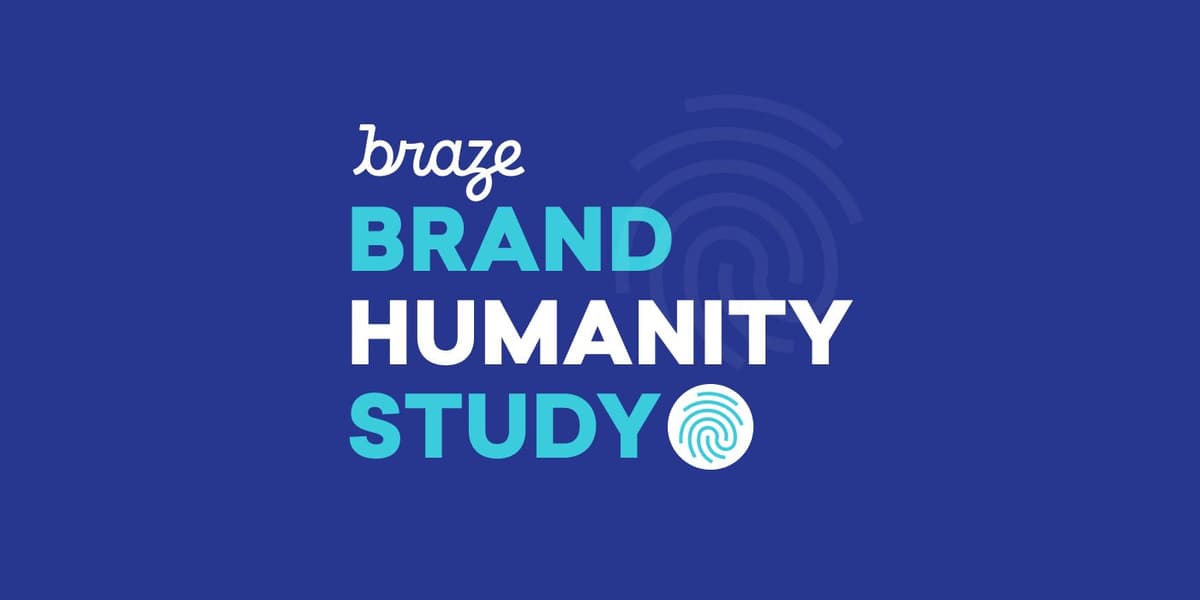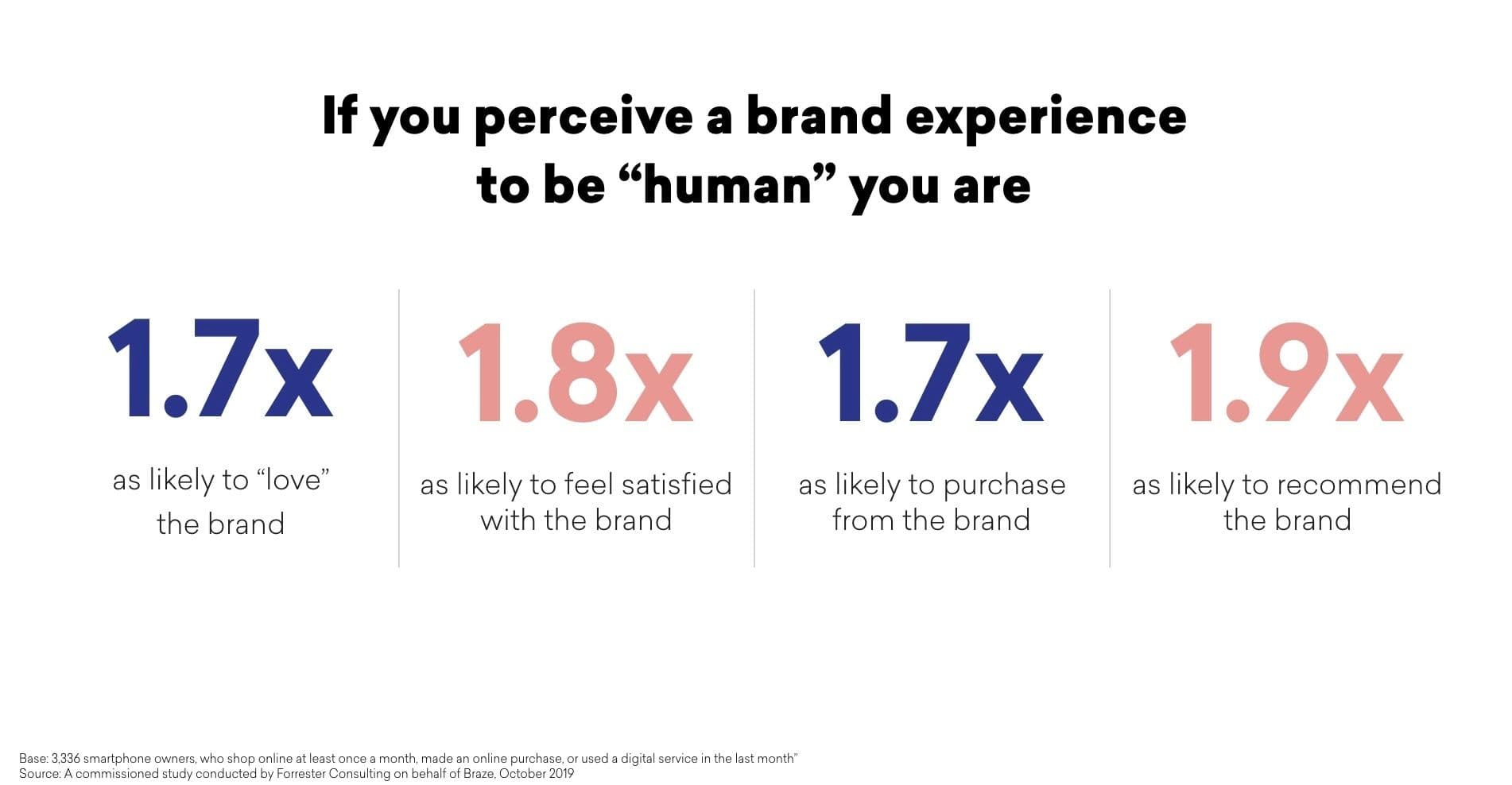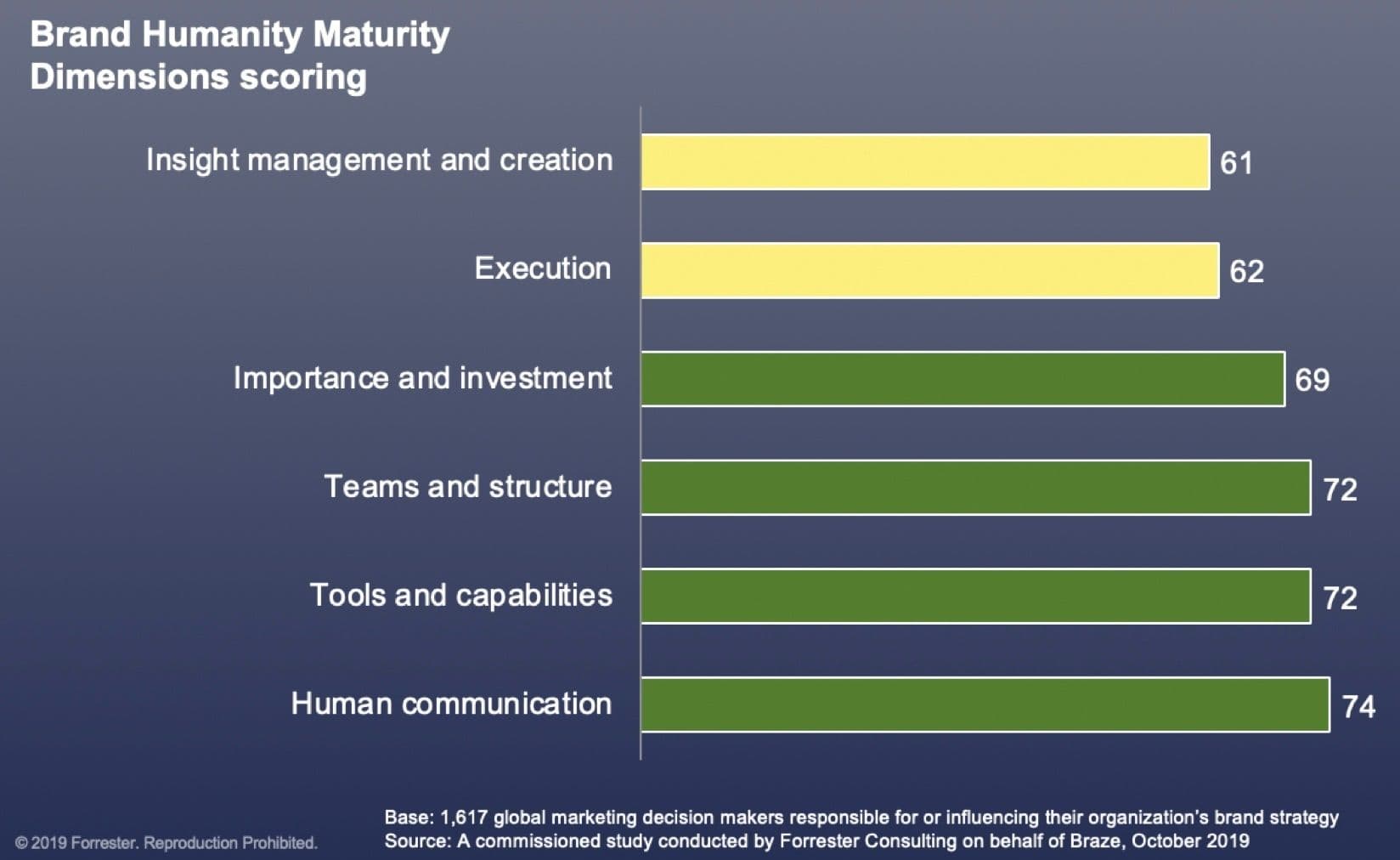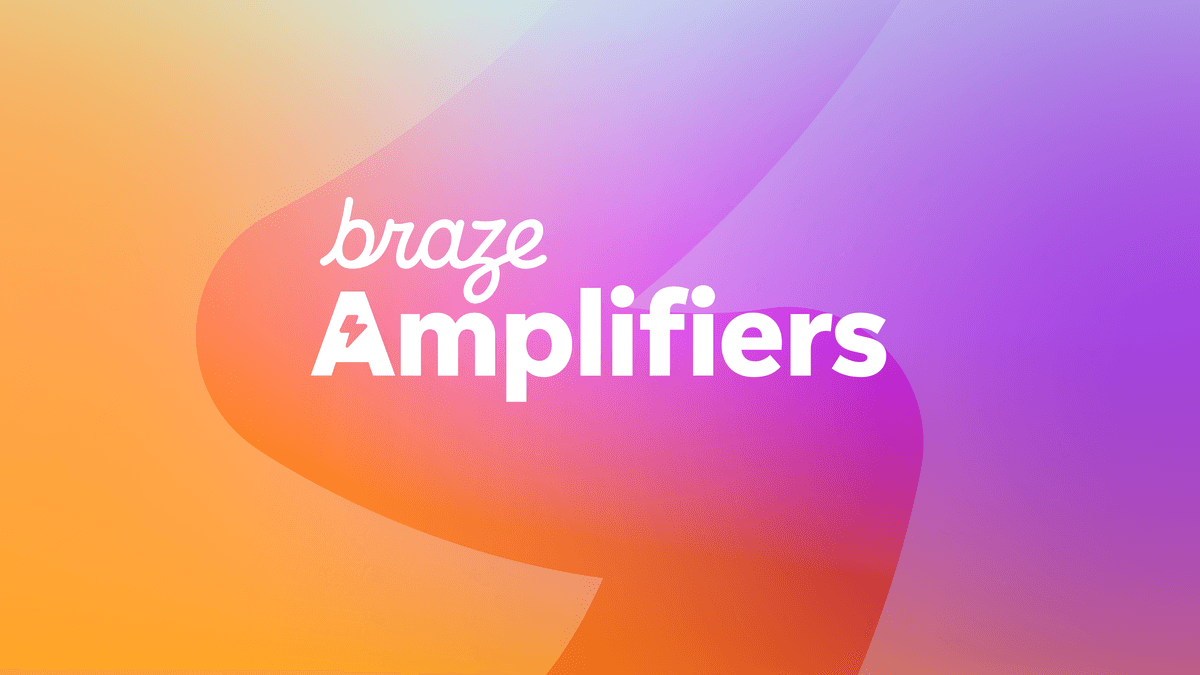Empathy at Scale is Central to Building Brand Humanity
Published on November 05, 2019/Last edited on November 05, 2019/3 min read


Jane Grenier
Creative Brand Storyteller at BrazeIf there were something you could do to ensure that two out of three of your customers would be loyal to your brand, would you do it? That’s the power of brand humanity in action. In his Day Two keynote at LTR 2019, special guest Dipanjan Chatterjee, Vice President and Principal Analyst for Forrester, emphasized the value that humanity adds in the age of Big Data. While introducing the new Brand Humanity Study based on commissioned research conducted by Forrester Consulting on behalf of Braze, Chatterjee reminded event guests that more human communication leads to better business results.
Year over year, the positive impact of brand humanity on customer behavior remains, even as consumer expectations rise. A customer who has had a brand experience perceived as human is significantly more likely to love that brand, make a purchase, and feel satisfied. Perhaps most importantly, human experiences drive recommendation. Surveyed customers who received human communications were nearly twice as likely to recommend that brand to friends and family. These findings are anchored in the Brand Humanity Index (BHI), which was introduced at last year’s LTR event.

This year, we went one step further. Chatterjee also shed light on how successful businesses make it work, citing this year’s first-ever Brand Humanity survey of business executives. More than 1,600 decision makers around the world contributed their thoughts and perceptions about the state of customer communications at their companies. Brands were categorized into one of four maturity segments, from Basic to Brilliant, based on how their scoring fit within the overall scoring distribution. The resulting Brand Humanity Maturity model (BHM) provides unique insight into how Brilliant brands’ practices set them apart and lays out a potential roadmap for brands that are earlier in their evolution.
Respondents were nearly universal in agreeing that human communication is important or critical to their organization. Regardless of their degree of success, they acknowledged struggling with some or many of the elements that make brand humanity at scale possible. In particular, Chatterjee noted that insight management and creation, along with cross-channel execution, represent areas where businesses recognize their need to improve.

Technology can help amplify creativity and empathy to achieve brand humanity at scale, reaching millions of individuals with timely, relevant messaging experiences. This is not, however, a “set and forget” process, says Chatterjee. In key takeaways at LTR, he cited the need for a relentless drive to meet rising expectations, a laser focus on continuously improving customer experience, and a willingness to rethink organizational structures and systems to achieve empathy at scale.
“Build Brand Humanity By Mastering Empathy At Scale,” a thought leadership paper based on the 2019 Brand Humanity research, is now available. It provides additional insight into what distinguishes brilliant brands’ communication practices, how consumer sentiment has shifted year over year, and detailed information on survey methodology.
Related Tags
Be Absolutely Engaging.™
Sign up for regular updates from Braze.




